- Home →
- Wizard101 →
- W101 Special Events →
- Wizard101 Beastmoon Hunt Strategy
June 1, 2020 June 11, 2020
Wizard101 Beastmoon Hunt: Strategy
This guide focuses on How to Help Your Team Win Matches while playing Wizard101’s Beastmoon Hunt. It’s intended for someone who is familiar with the Beastmoon Hunt and played a few times. We’ve tried to be thorough, so we have 21 tips for you, arranged in the following sections:
- Getting Started in a Hunt

- PICK. YOUR. BATTLES.
- Be Smart with Your Captures (“Caps”)
- Battle Smart
- Communicate
Before we get started, here’s links to our other Beastmoon Hunt resources in case one of them may be more helpful first:
- Never played Beastmoon Hunt before? Check out our Getting Started with the Beastmoon Hunt in 15 Minutes guide
- Looking for more information about Beastmoon Hunt specifics? Check out Eric’s Comprehensive Guide to the Beastmoon Hunt
- Looking for more information on Beastmoon Hunt Upgrades & Reweards?
- We have an overview of Beastmoon Hunt Rewards
- And we also describe the Best Ways to Obtain Beastmoon Hunt Upgrades & Rewards

A. Getting Started in a Hunt
Three tips when you’re get started in a Beastmoon Hunt:
#1. What to Do in Your Base
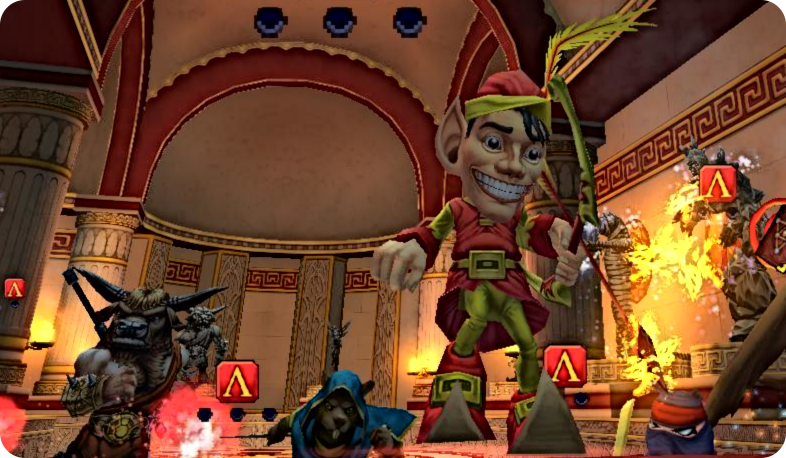 Your first task is to pick a Beastform. If you really like one, or are at a higher level/tier on it, go ahead and pick it. Or if you’re indifferent like me, you can let the others pick first and then pick one that should help your team the most:
Your first task is to pick a Beastform. If you really like one, or are at a higher level/tier on it, go ahead and pick it. Or if you’re indifferent like me, you can let the others pick first and then pick one that should help your team the most:
- If nobody picks a Beastform with healing (usually a Life Beastform), I usually pick it.
- Then, if nobody picks a Beastform that helps protect others (usually an Ice or Death Beastform), then I usually pick it next
- Otherwise I’ll pick whatever Beastform I feel like playing
Typically you’ll want to buy some Battle Cards from Acteon. As you get to know a Beastform, you’ll learn which of its cards you tend to use more often and should prioritize buying.
#2. What to Do When You Enter the Arena
If your Beast can have extra starting pips, try to gather a Pip Wisp or two. There’s a limited number available and they go quickly, so it really helps if you eventually learn where they usually show up and run to them right away.
Otherwise, it’s usually a good idea to capture a Battle Ring right away. There are two that are closer to your team’s base than the other team, so they are usually easy to capture.
#3. Learn the Battle Arena Over Time
 If you’re not familiar with the Battle Area, try to learn these things over time:
If you’re not familiar with the Battle Area, try to learn these things over time:
- Where do the Pip Wisps usually show up?
- Where are the stationary Health Wisps?
- Where do the teleporters take you?
- What are the fastest routes between Battle Rings? Sometimes it may be a teleporter.
- Where do the Beastmoon Chests usually show up? You’ll want to grab these when you’re not in battles (usually when you’re looking for Pip Wisps), so you can buy Battle Cards if you want to the next time you’re in your team’s base
There will be times during a Hunt where you’re not needed at a Battle Ring (e.g., maybe they are full). In your first few Hunts, use these times to explore the Battle Arena a bit.
B. PICK. YOUR. BATTLES.
Winning or losing a contested Battle Rings can make a huge difference:
- A 20 point swing for an outer Battle Ring (10 points if you win vs 10 if the other team wins)
- A 40 point swing for the Spiral Ring (20 points if you win vs 20 if the other team wins)
Follow these four guidelines to increase your chances of winning a battle in a Battle Ring.
- Majority Rules
- Only Join When at “Full Strength”
- Try to Pick Good Matchups
- Try to Pick Good Teammates
#4. Majority Rules
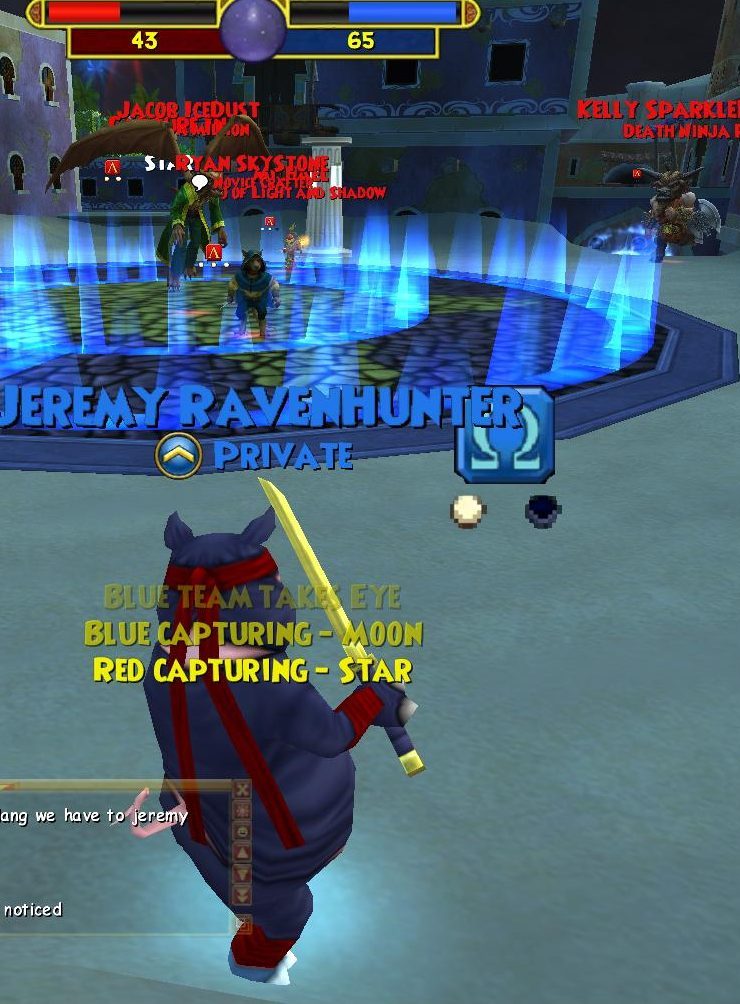 ALWAYS start battles where have more Beasts than the other team in a Battle Ring. Even if the advantage is only one round, your odds for winning that battle go up significantly.
ALWAYS start battles where have more Beasts than the other team in a Battle Ring. Even if the advantage is only one round, your odds for winning that battle go up significantly.
NEVER intentionally start a battle with fewer Beasts than the other team. Even if a teammate jumps in later, your team most likely will lose that battle.
This is by far the most important guideline you can follow.
#5. Only Join When at “Full Strength”
If your Beastform can have extra starting pips (you can see them below the team symbol for your Beastform), make sure they are full before jumping into a battle. Otherwise, spend time gathering Pip Wisps until they are full.
And make sure to remember to have your Beastform at full health. If you only need 250 or less, the stationary Health Wisp can be a good option. Otherwise, head back to your team’s base, since there are always several floating Health Wisps there. Look for the same teleporter color that you used to enter the Hunt initially!
Also note that you may occasionally make an exception to this guideline:
- Perhaps if you join quickly you can give you team more Beasts than the enemy for a turn or two
- Or maybe at the beginning of a Hunt, when Pip Wisps can be hard to find you’ll have no choice but to enter a fight (although later in the Hunt you should be able to find them)
#6. Try to Pick Good Matchups (when you can)
In the Beastmoon Hunt each school performs better against some schools and worse against others. If possible, try to have matchups in your favor, especially when each team has an equal number of Wizards. You can use the Beastmoon Hunt school advantage chart, located at the top left of the screen, to help guide you:
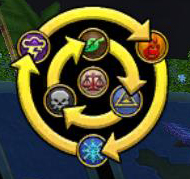 A school that points to another one has an advantage over it (and does an extra 25 flat damage per hit). For example, Fire has an advantage over Ice
A school that points to another one has an advantage over it (and does an extra 25 flat damage per hit). For example, Fire has an advantage over Ice- I’ve also found some schools play well versus the school ahead of it in the other circle. For example, Myth Minotaur plays well against Ice Colossus
Two other things to note regarding matchups:
- You can see your enemy’s starting pips before a battle. If your are full and theirs are empty, you may be more likely to start a battle
- Beastforms that can summon a minion are more beneficial in the outer Battle Rings, since they only allow 2 or 3 Beasts and will always have a spot available for a minion. In the center Sprial Battle Ring, which is 4v4, there usually won’t be a spot available for a minion.
#7. Try to Pick Good Teammates (when you can)
 Most battles in the Beastmoon Hunt involve 2 or more members of your team. If possible, try to have:
Most battles in the Beastmoon Hunt involve 2 or more members of your team. If possible, try to have:
- At least one “offensive” school that can do a lot of damage, like Storm, Myth or Fire
- And at least one “defensive” school that can help protect teammates, like Life, Ice, Death or Balance
One special mention for the Spiral: try to have a Life Wizard in your Spiral battles, as they can help a lot.
C. Be Smart with Your Captures (“Caps”)
During the Hunt there will be times where you are at a Battle Ring and there are no enemies around, so you have an opportunity to capture it (commonly referred to as a “cap”).
Keep in mind three suggestions:
#8. Don’t Get Caught
Before you step into a Battle Ring, double check that there are no enemies nearby.
And once you start capturing, position yourself so you can see others coming, usually near an edge of the Battle Ring so you can step out quickly if needed.
If you see an enemy coming, usually the best option is to step out, unless you have more beasts (Tip #4) or a favorable matchup (Tip #6).
#9. Capture at the Start and When Winning
At the start of the Hunt, it’s usually a good idea to capture Battle Rings when you can to give your team some extra points. Just be careful not to get caught!
And if you’re team is winning, then it’s usually a good idea to capture circles too.
Sometimes the other team will choose to “trade caps” with you (i.e., you capture a circle, run away, and then the other team captures it — then rinse, repeat & lather!). If your team is ahead, this situation usually is helpful since it can help you achieve 100 points faster (especially if you typically control more Battle Rings then they do, since you will get more points per capture than they do).
Just be aware of a couple of exceptions when you shouldn’t trade caps with the other team:
- Does the other team consistently have more Battle Rings captured than your team? Remember they are getting more points per capture than your team (it’s based on how many Battle Rings a team controls at that time)
- Or is the other team winning the current battles (especially at the Spiral) ensuring they will later take the lead?
#10. Don’t Trade Captures when Losing
If your team is losing, especially as the other team gets closer to 100 points, don’t trade captures with the other team. You’re actually helping them win!
If you’re behind, there may even be times where it may be smarter to only focus on winning contested Battle Rings and let the other team have the uncontested ones. If your team wins all the battles, you’ll eventually win the match.
D. Battle Smart
Five guidelines on battling smart:
- Understand the Symbols and Descriptions
- Prioritize Your Attacks
- Prioritize Your Defense
- Maximize Your Buffs
- Get to Know the Cards for All Beastforms
- Know When to Stall or Flee
#11. Understand the Symbols and Descriptions
One cool thing about the Beastmoon spell cards is that many of them get a benefit if certain conditions are met (e.g., if you have an absorb, you do more damage).
The symbols can be different than the traditional Wizard101 spell cards. When you start playing, study this helpful symbol guide so you can take advantage of these benefits!
Comprehensive Beastmoon Hunt Symbol Guide (opens in a new window)
Note that sometimes the description may not specify if a spell applies to one or all enemies/allies. Pay attention to the spell type icon in the middle-right, which will be a yellow-ringy-thingy if the spell affects all enemies/allies.
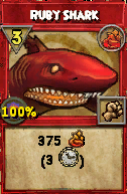
Attacks one enemy (notice fist icon)
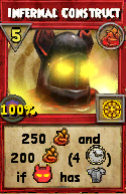
Attacks all enemies (notice yellow-ring icon)
#12. Prioritize Your Attacks
In a battle, you and all of your teammates in the battle should focus all of your attacks on one enemy at a time in order to take them out quickly.
Why? Remember our “Majority Rules” tip? Once you defeat one enemy, you should have a numerical advantage, and your odds winning the battle usually increase significantly.
So which enemy should you prioritize? Well there’s a few things to consider, so here’s some guidelines:
- If the enemy team has a hitter with pips that can AoE (“Area of Effect”; hits all enemies) soon, it often better to try to defeat them before they can AoE. Even if they get healed, they will lose all of their pips
- Otherwise if the enemy team has a healer (e.g., a Life Beastform), we suggest focusing on it first. Otherwise it can keep reviving other Beastforms, which can be pain to deal with
- Next we usually focus on “offensive” enemies, like a Storm, Fire or Myth Beastform
- And last usually are defensive Beastforms (e.g., Ice)
Four additional items to keep in mind:
- If your team can counter an enemy Beastform well, you may prioritize it lower. For example, if you have a Beastform that can easily remove blades, a Storm Wolf (which has a lot of blades) may be a lower priority in that battle
- Also try to be mindful of priorities when hitting. On some rounds it may be better to worry about some defense, like removing a blade or trap, than hitting
- If an enemy has summoned a minion and you defeat that enemy, their minion will go away too
- Keep in mind that drain spells will ignore enemy absorbs
#13. Prioritize Your Defenses
If you are a healer (e.g., Life Beastform), most enemies will prioritize trying to defeat you first. So usually your initial priority is to heal and protect yourself. Once your survival is assured, you then can focus on healing teammates. If you don’t survive? That’s okay — sometimes the other team has to focus so much on taking you out that it gives a chance for your team to win.
One other important note for healing: Heal over Time spells (“HoT”) will NOT revive defeated allies. You’ll need Guardian Spirit or a heal spell that’s not over time to revive them.
If you have defensive absorbs (e.g., Ice Beastform):
- If your team has a low-health hitter (e.g., Storm, Fire, Myth), especially with starting pips and an AoE, you may want to protect them first so they can get their AoE cast
- Your next priority is to help your healer survive
- After that, generally you’ll prioritize protecting your hitters, or maybe a Beast that has a spell that benefits from having an absorb
If you have damage reduction (e.g., Death Beastform), usually you want to focus it on the other team’s hitters.
There are some exceptions to these guidelines, which you may learn over time, but they’re usually a good “rule of thumb” to follow.
#14. Maximize Your Buffs
If your Beastform has buffs (i.e., blades or traps), keep the following thoughts in mind:
Can I provide a Blade for an AoE?
The biggest impact you can get from a blade is to cast it on a teammate (or yourself) before an AoE (“Area of Effect”, which attacks all enemies). This way the additional damage from the blade will apply to all enemies, instead of just one.
Can My Team Use the Buff Immediately?
If you’re able add a trap or blade a teammate right before a hit, you can boost damage that same round. This may help you defeat an enemy sooner (maybe before they get a big hit off), giving your team better odds to win the battle.
Will We Be Able to Use the Buff?
Remember that a blade or trap won’t help you if you can’t use it:
- Will the Beast receiving a blade survive long enough to use it?
- Or does an enemy Beastform have a counter that can remove the trap or blade?
#15. Get to Know the Cards for All Beastforms
If you enjoy the Beastmoon Hunt, we suggest getting to know the cards for all Beastforms. It will help you understand:
- How to coordinate better with a teammate (e.g., cast a heal over time spell on them because you know it boosts the damage for one of their spells)
- How you may be able to counter an enemy Beastform (e.g., not cast a shield because you know they have a card that will steal it)
To get to know each Beastform, we suggest two things:
First, read Eric Stormbringer’s articles on the spells for each Beastform. Think about how they might coordinate well with teammates and what opponent spells counter them well.
And second, once you have an initial understanding of the spells for a Beastform, try playing it 2 or more times.
#16. Know When to Stall or Flee
If it’s obvious that your team will lose a battle:
- If you’re still alive, we suggest “stalling”:
- Wait until your timer gets close to zero to pick a card
- You may want to choose more defensive cards if possible, like absorbs
- Or if you’re defeated, you should flee right away (unless the other team is at 98 or 99 points)
Or if your team may win the battle but you are defeated, you should flee if:
- Your team doesn’t have a healer
- And it will take several more rounds to win the battle
Fleeing gets you back to the Battle Arena quickly, so you can help your team with captures and other battles sooner. Stalling can delay several enemies getting back to the Battle Arena quickly. Both of these things can help your team.
E. Communicate
In the Beastmoon Hunt, the team that coordinates the best often wins, so try to do it well.
When you start in your base, it can be helpful to start off with something like “Hello”, “Let’s go team” or maybe “I like to coordinate”.
Once the Hunt begins, here’s some helpful suggestions for messaging:
- Ask for Teammates for a Battle
- Coordinate Battle Strategy
- Tell Them What You’re Up To
- Make Polite Strategic Suggestions, When Helpful
- Joke Around a Bit
#17. Ask for Teammates for a Battle
If you see an enemy in or near an uncontested Battle Ring, or if you’ve started a Battle (I sure hope you followed guideline #4) and there’s an open position for a teammate, ask for teammates to come. It’s a good idea to mention:
- What Battle Ring (remember the options are Sun, Moon, Star, Eye and Spiral)
- How many you need (you can tell how many by counting the positions without an X in the Battle Ring)
- If the battle has started or not (and if so, you may want to mention your class)
So the messages would be something like:
- “Need one at Moon, possible battle”
- “Need 2 at Spiral, potential battle”
- “Need one at Sun ASAP, fire in battle already”
#18. Coordinate Battle Strategy
Next, when you get into battle a little coordination can help a lot.
The first priority is to make sure everyone is focusing on the same enemy. Usually it’s best to say something like “Let’s focus on Life first.”
Second, if you can defeat an enemy, let your team know (e.g., “I can take out Life next”). Just remember that if the other team could shield or heal, it may be better to have multiple Beasts hit (i.e., “overkill”) rather than risk the enemy surviving.
Third, if you can do an AoE soon, tell your teammates, in case they may have blades (e.g., “can AoE in 2 turns, anyone have a blade?)
And fourth, if you know that your teammate has cards that can help you, ask for them. You might say something like “can you cast a DoT heal on me?” or “can you trap ice?” This is one of the reasons why knowing other Beastform spells can be really helpful.
#19. Tell Them What You’re Up To
It’s a good practice to confirm that you’re coming to help for a battle.
I also like to mention what I’m up to when I’m in between battles. It’s less of a priority but can be helpful.
For these kinds of messages, I like to mention my school first:
- “Fire coming to sun”
- “Life getting pips and health”
- “Ice capping moon” (remember that “cap” is short for “capture”)
#20. Make Polite Strategic Suggestions, When Helpful
Sometimes it’s beneficial to discuss overall strategy. Maybe you have someone less experienced that is interested in coordinating but just needs some advice. Or maybe your team starts losing and it’s a bad idea to keep trading Battle Ring captures.
If you can, try to mention strategy in the form of a question or opinion, since it’s more polite:
- “suggest we stop capping”
- “can we protect moon?”
- “hey myth, want to cap moon with me?”
#21. Joke Around a Bit
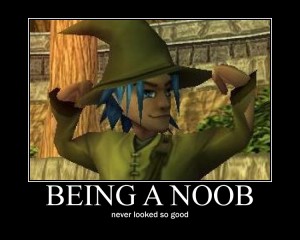 As long as your coordinating well, why not joke around a little bit when the opportunity presents itself?
As long as your coordinating well, why not joke around a little bit when the opportunity presents itself?
What’s better than just winning a Hunt? Winning a Hunt and getting a good laugh along the way… 🙂
Or if you get a teammate that doesn’t understand Beastmoon Hunt strategy and is making bad choices that are costing your team the match, I find trying to make a joke about it a better way to cope than getting angry.